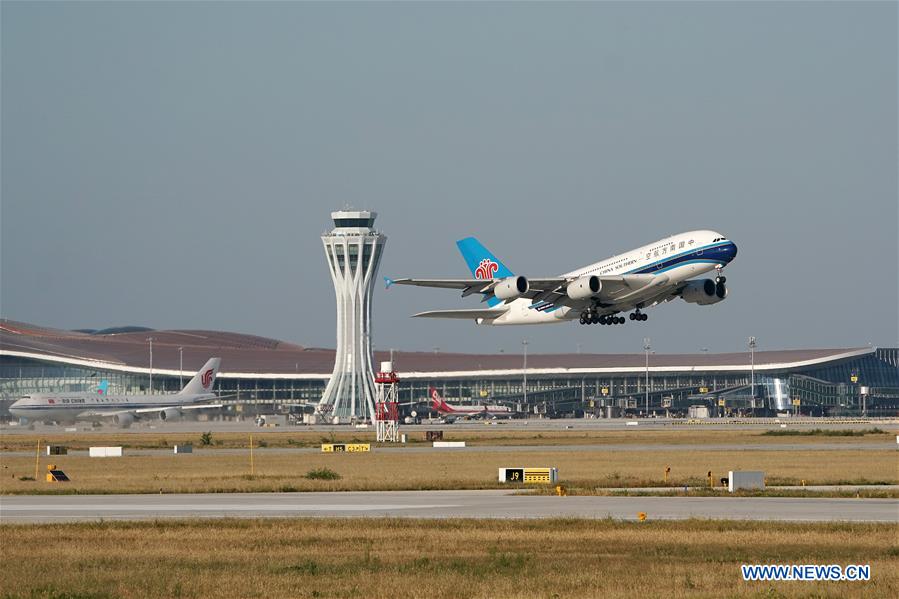Beijing's new airport opens to flights
 0 Comment(s)
0 Comment(s) Print
Print E-mail Xinhua, September 26, 2019
E-mail Xinhua, September 26, 2019

According to the Daxing airport authority, 66 airlines have applied to operate at the airport. Among them, 20 are domestic airlines and 46 overseas ones. The airport will operate 116 routes connecting to 112 destinations globally around the end of this year.
The Daxing airport is expected to take pressure off the capital airport, which has three terminals. The capital airport, beginning operation in 1958, recorded a passenger throughput of over 100 million in 2018, already surpassing its maximum passenger handling capacity.
New impetus
Starting from a metro station in the third southern ring road of Beijing, a passenger can reach the new airport's terminal building in 19 minutes, thanks to the Beijing municipal government's investment in supporting facilities for the airport.
Three urban rail lines and several expressways will connect the 5G-covered airport terminal with the city center, Xiongan New Area and Beijing's surrounding areas.
The airport, which took five years to build, is 82 km away from Tianjin Municipality and 197 km away from Shijiazhuang, capital of neighboring Hebei Province.
The airport's role as the regional transport hub would greatly facilitate China's strategy to integrate the development of Beijing, Tianjin and Hebei and help create a development model with a better economic structure, cleaner environment, and improved public services in the city cluster, said Wang Youguo, district chief of Daxing.
On Aug. 31, the Daxing airport free trade zone (FTZ) was officially inaugurated as China's only cross-provincial FTZ pilot area. Covering an area of 19.97 square km, the FTZ serving Beijing, Tianjin and Hebei is a magnet for international firms specialized in aviation logistics and aviation technology.
Wang said the FTZ will pilot policies facilitating access to foreign investment to boost the opening-up of Beijing's service sector.






Go to Forum >>0 Comment(s)